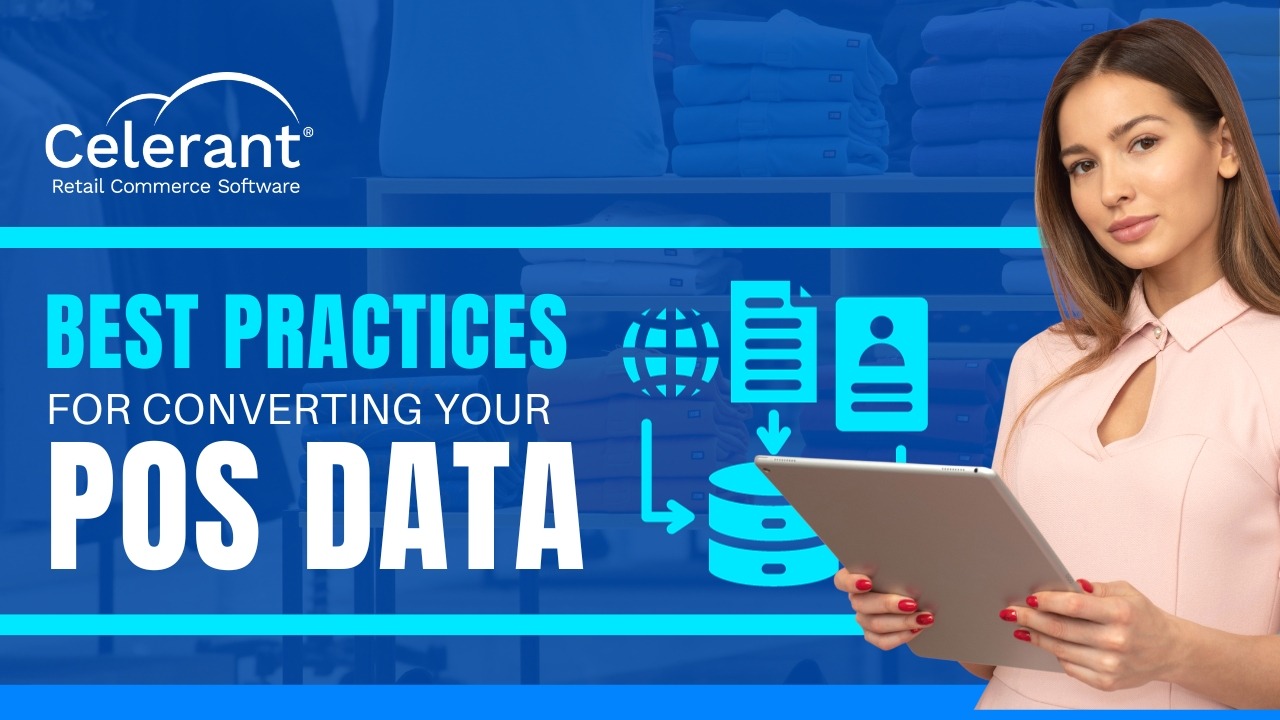Blog
Best Practices For Converting Your Point Of Sale Data
November 19, 2018 / 7 minute read / By Michele Salerno

Blog

After already doing a ton of work and spending a lot of time researching your new point of sale system, the next step is converting all of your retail data. But if you are like most retailers, you are not as excited about this dreaded data conversion you are about to do.
More than likely, your data records in your POS system are messy, incomplete, and in desperate need of a cleanup session. If this is true, then you are probably bracing yourself for a potential fiasco.
Messy data with gaps and errors can cause a lot of trouble in implementing your new POS system, leaving you disheartened and skeptical about your decision. Ever been there?
We get it. You don’t have to let the fear take over. This blog is loaded with some serious tips and tricks to make your upcoming data conversion a breeze.
Planning is important – your future data conversion also needs a solid plan. To get started, ask yourself these three questions.
What do you want to accomplish with this data conversion project?
First things first, set your goals. Figure out what you want to achieve with this data conversion project. Start by filtering out the product, sales, and customer data you need to move or keep. We recommend saving your product and customer data, plus your sales history for up to the past two years.
What is your timeline for this project?
Time matters. Your conversion needs clear goals and deadlines. To make sure you stay on track, break down your project into smaller steps with specific completion dates. Be realistic and consider adding business variables that can be detrimental to your business. It might not be wise to plan a data conversion during your busiest sales season -it might disrupt your operations.
Are there any POS data restrictions and regulations that my retail software provider must know?
You need to make sure that your retail software provider is aware of any restrictions and regulations related to POS system data. If you have specific requirements for your retail data conversion, communicate them directly and clearly.
For example, if you want all original values to remain unchanged after transformation/cleaning, state that clearly. If you don’t communicate these details, you might not be satisfied with the results. Make sure your expectations are communicated upfront and followed from the beginning. It’s all about setting the right guidelines for a smooth conversion process.
Once you have got your plan ready, it’s time to clean up your POS data. Look for incomplete, improperly formatted, or duplicated data, including customer records. It might seem like a big job, and to be honest, it is.
But don’t worry, most retail software providers offer data scrubbing and cleaning services to make your life easier.
Here are some tips for cleaning your data:
For Products, Keep:
For Customers, Keep:
For Vendors, Keep:
By focusing on these points, you will keep your essential data intact and ready for the conversion process.
Your point of sale system might have passed its own tests during development, but that doesn’t mean it’s explicitly programmed for your store. That’s why testing is crucial.
Testing your new POS system ensures it works just right for your business. It helps you diagnose and troubleshoot problems before they become even bigger challenges when you fully integrate them into your operations.
Even if you’ve done everything correctly, things can still go wrong. Just imagine you have cleaned and organized your data, transferred it to its new home, and then suddenly a system crash wipes everything clear. To avoid this absolute nightmare, regular data backups are your best friend – even daily backups are a good practice.
During your POS implementation, back-up your database at every critical point. That way, if something goes wrong, you only have to take a few steps back instead of starting all over. It’s a simple thing that can save you from major headaches.
Most SaaS point of sale systems will come as a hosted solution, which means your data will be automatically backed-up and stored off-site at your hosting facility.
When converting to a new point of sale system, there are some important questions to ask your POS vendor before you start this process. Depending on which retail software provider you choose, they likely offer multiple options for data conversions.
Does the POS provider offer product catalog imports within the point of sale software, directly from your vendors?
Or do they offer the option to manually import files, which you would first need to export from your prior POS system?
Does the retail technology partner offer data conversion services- where they would assist you and import your files that you have exported from your old POS system?
Does the POS software provider offer data scrubbing services, helping you clean up your data so you can start with a clean foundation in your new POS system?
If the POS vendor doesn’t offer any of these services, how time-consuming is it for you to do this on your own? Hint- ask them to show you how to do this in their POS system.
With any luck, your new retail technology partner has plenty of options to help you with this cumbersome process. If your vendor can help, it makes the process for you so much easier since they are the technology experts and hopefully specialize in this process.
Converting your data might seem like a difficult challenge, but it doesn’t have to be scary. Here’s your guide to making it smoother:
Following these guidelines is going to make your upcoming data conversion a lot easier and hopefully give you a little more peace of mind. Happy retail data-converting!